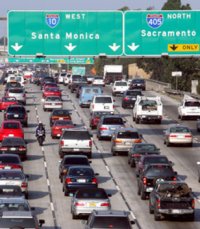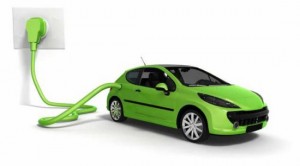 Here’s a few interesting happenings from the past week…..
Here’s a few interesting happenings from the past week…..
- BMW unveiled its long-anticipated all-electric i3 hatchback. The German automaker has slowly been testing out electric drivetrains through its Mini Cooper subsidiary and through its ActiveE demonstration model. BMW hosted a series of elaborate events for the i3 on Monday in London, New York, and Beijing. It’s expected to price at $41,350 (plus a $925 delivery charge) in the US prior to incentives. It’s impressing analysts who see the automaker taking the technology very seriously, including investing $2.7 billion into it so far. The i3 can travel about 100 miles on a charge, and there’s also an optional diesel or gasoline range extender package you can buy that allows the car to travel about 300 miles. BMW has utilized lighter materials to extend the range; it’s built on a carbon-fiber based shell and an aluminum chassis.
Competitors will include other luxury brands with alternative technologies such as Lexus hybrid models, though it’s expected to be targeted primarily against German competitors in the home market. The most direct competition overseas will be Tesla Motors. The most popular version of its Model S is pricing at around $70,000. It will take until late 2014 for Tesla’s Model X crossover to come out and go more direct with the i3 in styling and pricing.
- Electric vehicle charging station maker AeroVironment just won a contract with the Federal Aviation Administration to use its drone for commercial purposes. It’s the first time this has happened, similar to Elon Musk’s SpaceX becoming the first civilian aerospace company to contract with NASA. AeroVironment has been providing its Puma 13-pound unmanned aircraft for military reconnaissance for several years. Now the Puma will be used to monitor oil spills and wildlife observation in the Arctic Circle. AeroVironment thinks its drone models can be used for other applications, like traffic monitoring, police surveillance, and storm tracking.
This is yet another example of robotics and autonomous systems striding forward. It’s similar to driverless cars being tested across the country, and several other advanced technologies. For those with ominous feelings about Big Brother and the Terminator taking over, you might want to get over it. There’s no going back.
- Hydrogen fuel cell vehicles are on the verge of another breakthrough. UK-based ITM Power has figured out how to reduce the production cost of hydrogen by nearly 33% — from $9.57 per kilogram last year to $6.44 per kg. This includes a 10-year amortization period where its anticipated to drop to $4.13/kg – another 23% drop. The gain is coming from new, more efficient “stacks” – where hydrogen is extracted from electrolysis. Fuel cell vehicles will become much more affordable to fuel up. Now, if they just figure out a way to inexpensively install a lot of hydrogen fueling stations…..
- Japanese automakers are working together to install a lot more charging stations in Japan. The current number is about 1,700 fast chargers and more than 3,000 regular chargers; that’s expected to grow to more than 4,000 fast chargers and more than 8,000 regular stations. Toyota, Nissan, Honda, and Mitsubishi jointly announced their agreement to work together to promote the installation of chargers for electric-powered vehicles and build a charging network service that offers more convenience to drivers in Japan. There will probably be a universal card-based system for charging at many of the stations. The announcement doesn’t mention it, but the fast chargers will be CHAdEMO chargers, which are used mainly in Japan. In North America and Europe the SAE combo charger is the norm.
- Electric Drive Transportation Association just brought in new board members and officers. Tanvir Arfi, president of Bosch Automotive Service Solutions, takes over as the new chair. He succeeds Mary Ann Wright, VP of engineering and product development for Johnson Controls, Inc. A former chair, Ted Craver, president and CEO of Edison International, was honored during proceedings. New board members represent a diverse list of technology suppliers to electric drive transportation – ABB, Inc.; Autowatts; Schneider Electric; Qualcomm; Real Power; Odyne Systems; BASF; and CenterPoint Energy.
- Biodiesel has worries to deal with; Mercedes-Benz is pulling out of the Illinois market after state lawmakers approved incentives to boost demand for biodiesel. Mercedes-Benz is concerned that if the fuel is poorly blended, it could gunk up its engines and worsen air quality. The German automaker has set a limit of B5, or 5% biodiesel content, and the state’s sales tax revision is focused on biodiesel of at least 10% blend.





